
Please Note: The house flag and word mark 'P&O' are Trade Marks of the DP World Company https://www.dpworld.com/

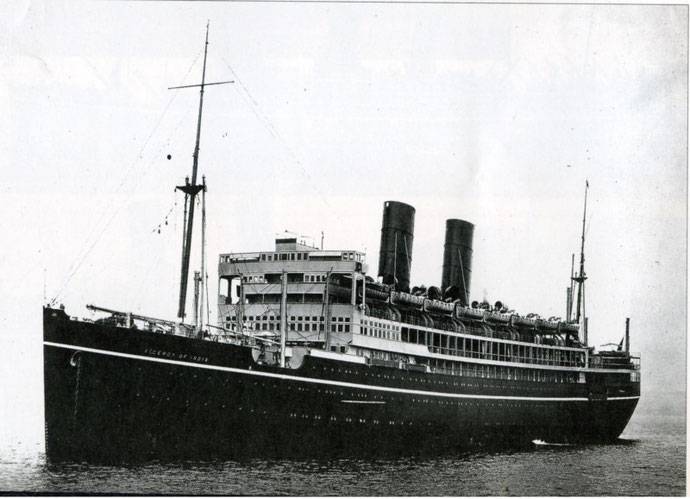
Ordered as the passenger ship Taj Mahal, she was completed at Alexander Stephen & Sons of Glasgow in March 1929 as the Viceroy of India.
She measured 612 feet overall and weighed 19,648 tons gross and was powered by two steam turbines, driving electric generators, powering two British Thompson Houston electric motors, producing less vibration and improved fuel consumption - and employing 20 fewer engineroom staff to run them than conventional oil-burners..
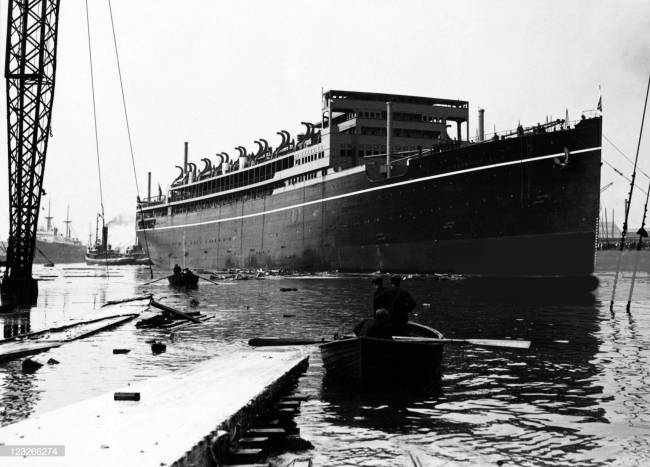
She was launched on 15th September 1928 by Dorothy, Countess of Halifax, the wife of the Viceroy of India, the Earl of Halifax. The ship's name had been changed to avoid offending Indians, particularly Muslims, for whom the Taj Mahal mausoleum is sacred.
Fitting out was undertaken at Shieldhall Wharf, Glasgow, and commenced on 8th January 1929. Viceroy of India was finished in P&O's traditional colours: black hull with a white band, red boot topping, upper works and lifeboats buff, her large vents black, her small vents buff and her two funnels black.
During fitting out she was damaged amidships by Donaldson South American Line's cargo ship Corinaldo, which was trying to dock in poor visibility. But by 17th February, she was ready for sea trials, and averaged 19.6 knots. She was completed in March 1929 and delivered to P&O on the 7th.
Viceroy of India was Britain's first large turbo-electric passenger ship. At about the same time as she was built, P&O also had RMS Mooltan's performance increased by the addition of BT-H turbo generators and propulsion motors to supplement her quadruple-expansion steam engines.
P&Os first experiences of turbo-electric propulsion led the company to specify the same form of transmission for a pair of liners ordered in 1930: The RMS Strathnaver and RMS Strathaird. Each Strath was only about 2,600 GRT bigger than the Viceroy of India but they produced about 77% more power, which made them about 3 knots faster.
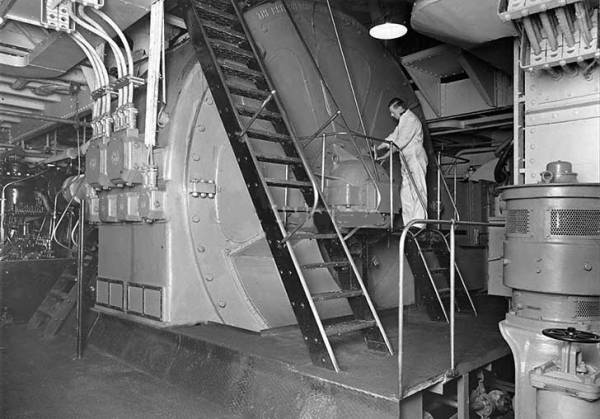
One of the Viceroy's two massive British Thompson Electric Motors, together producing 17,000 SHP.
In September 1932, Viceroy of India set a new record time between London and Bombay of 17 days, 1 hour, 42 minutes
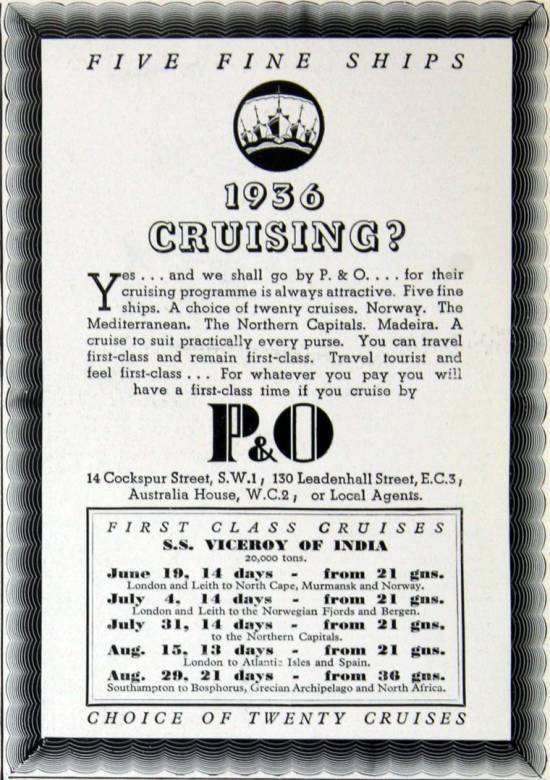
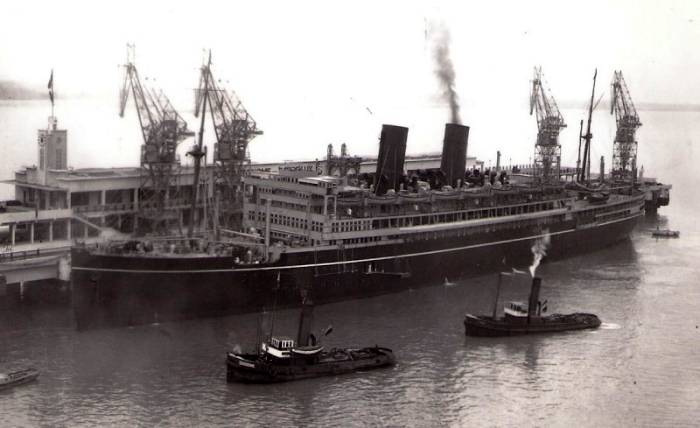
The RMS Viceroy of India was P&O’s crowning achievement and went a long way towards elevating the quality of service on the India route, to the standard established by the Company on the Australia service. She was a revolutionary ship and aboard her, for the first time, all first class passengers had cabins to themselves.
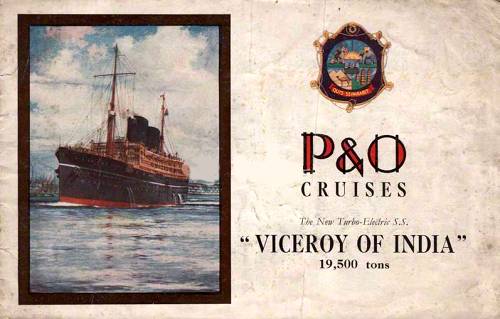
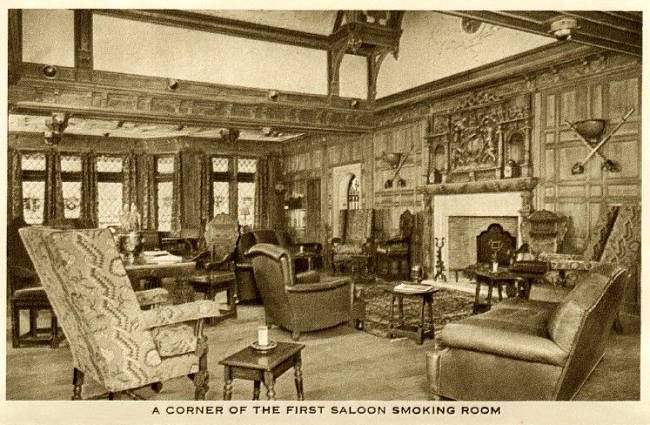
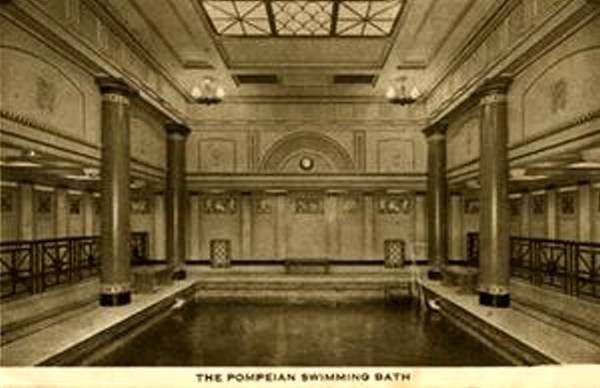
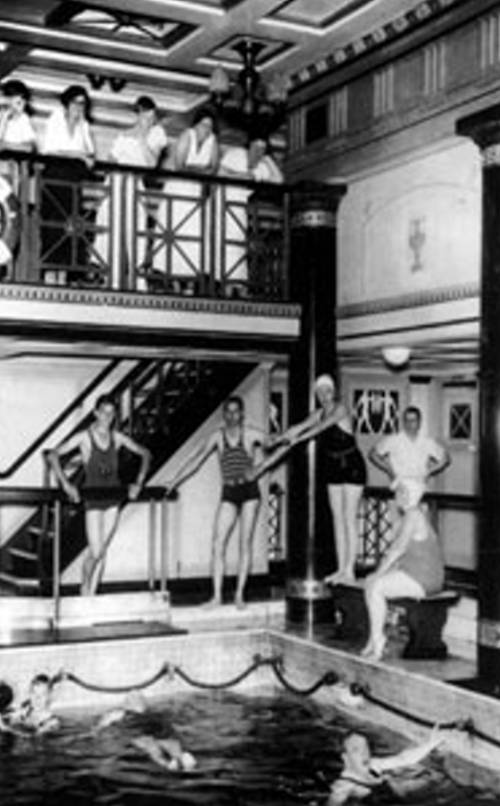
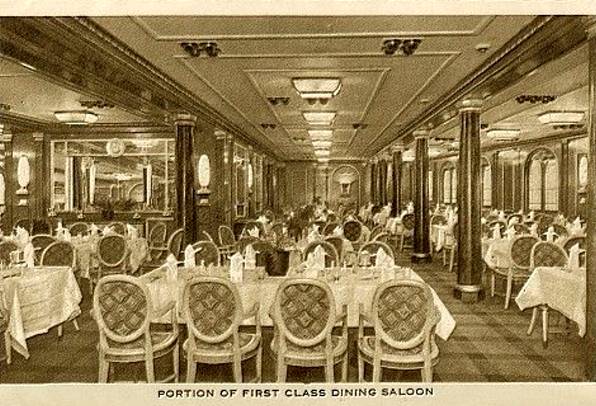
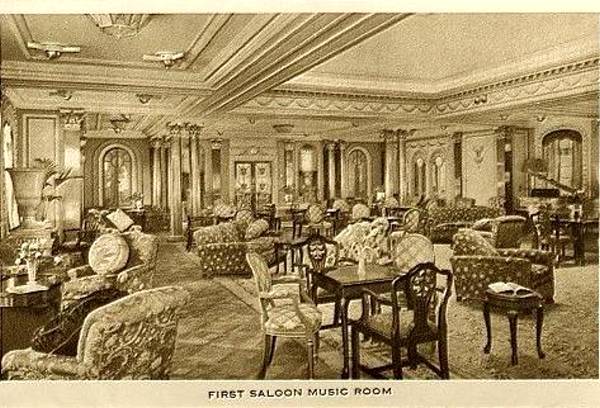
Cruising from the UK in the off-peak period, she soon became very popular in this role.
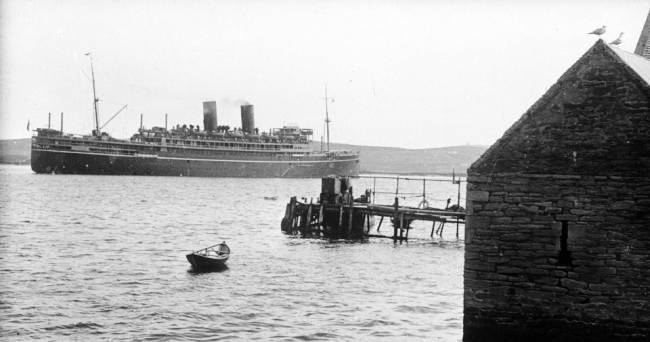
Viceroy of India at Lerwick
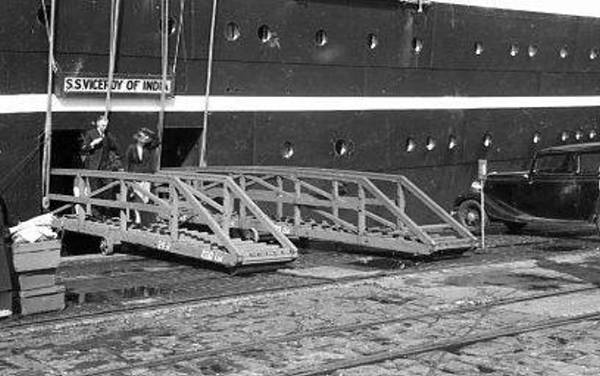
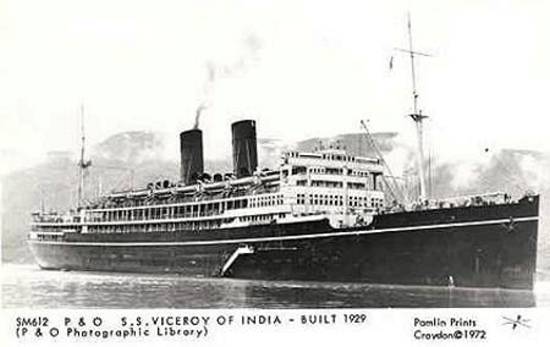
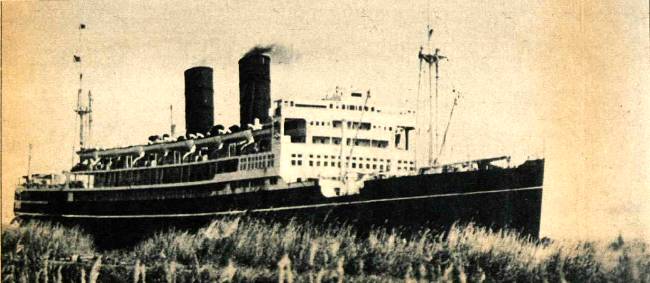
In the Suez Canal
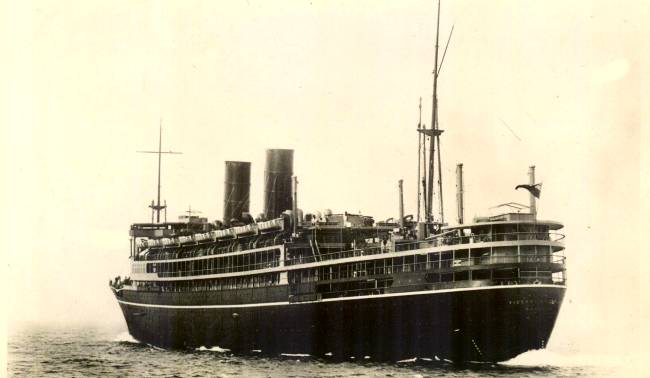
A fine port quarter view....
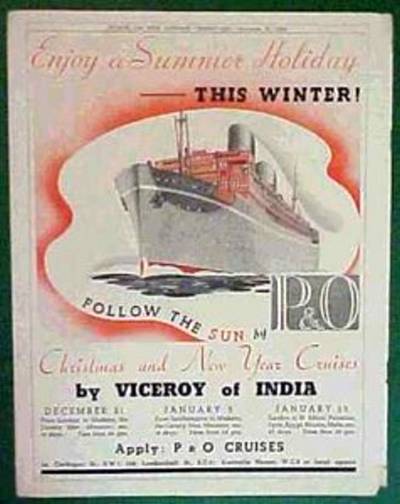
"It was little wonder then that Ron chose the Viceroy to convey Mervyn and himself to Egypt, since he knew her even better than Mervyn due to his previous cruise of the South Atlantic in 1934.
The snobbish, spoiled, working class, Mervyn Watson would have oggled at the splendid opulence of his surroundings as he dined in the George V dining saloon or reluctantly danced the tango with the amorous Miss Plunket Dillon encircled by the Georgian pilasters of the Music Room.
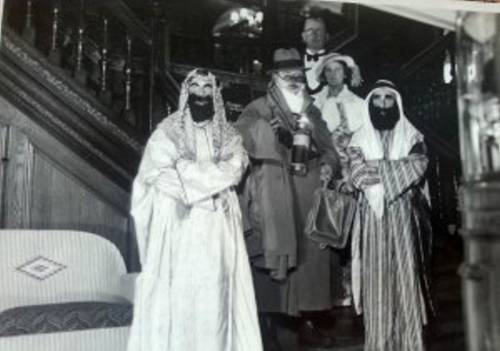
Here Mervyn cavorted with his friends, Mickey and Teddy, as they amused the other passengers in their hilarious fancy dress costumes....
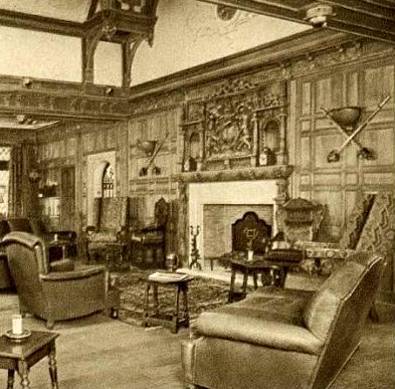
Far better to join his friend Ron for scotch and sodas in the austere splendour of the Jacobean Smoking Room, gazing at the crossed sabres over the mantle piece while sucking on the best Havana cigar.
Then to his bed in the adjoining suite to Ron’s, the splash of sea spray on their portholes heard through the separating door, the gentle purr of the latest electric turbine engines the merest vibration through his cotton flock mattress. However, all this luxury and decadence can sometimes spoil a chap, as we are about to discover as The Viceroy silently sails on......."
From: The Merry Millionaire, by J.A.Wells, a true Renaissance Man....
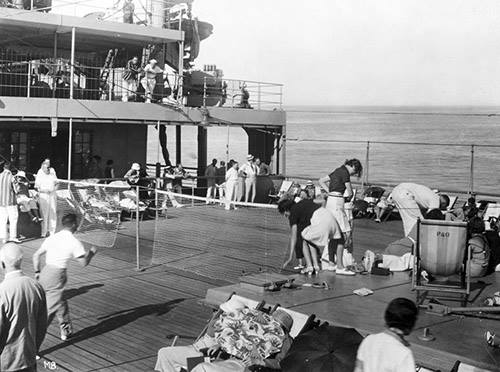
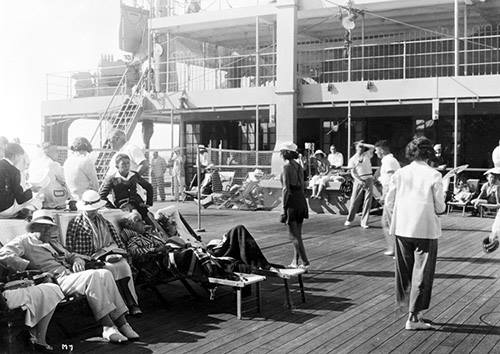
Carefree pre-war days aboard the Viceroy of India - 'anyone for tennis?'
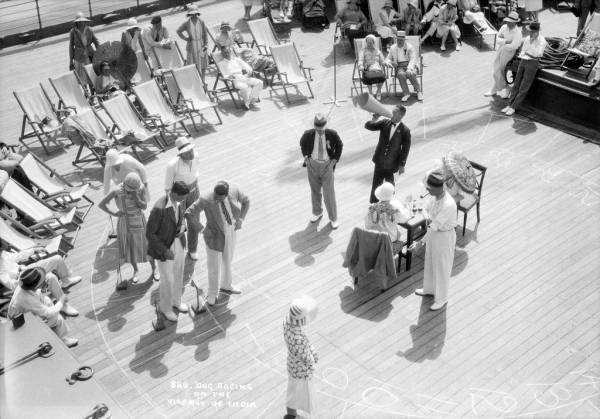
Dog racing anyone?
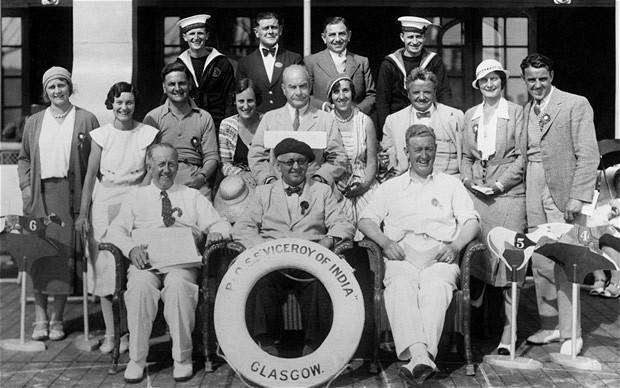
To the winners: the glory.......
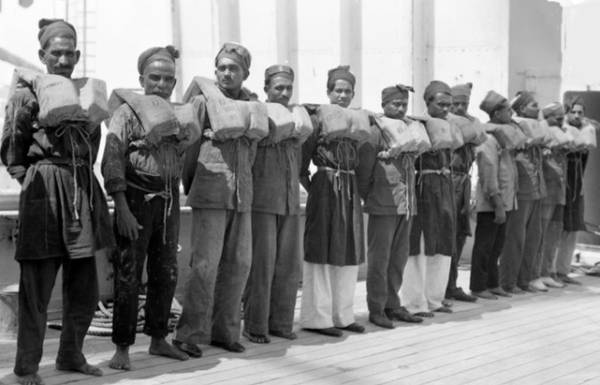
Boat Stations, for the crew, a serious weekly event.....
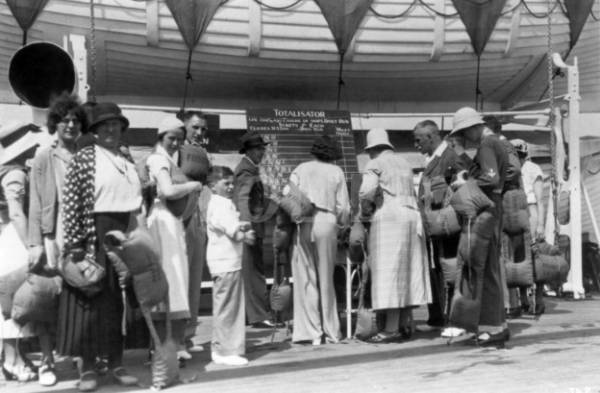
For the passengers, a more relaxed affair.....
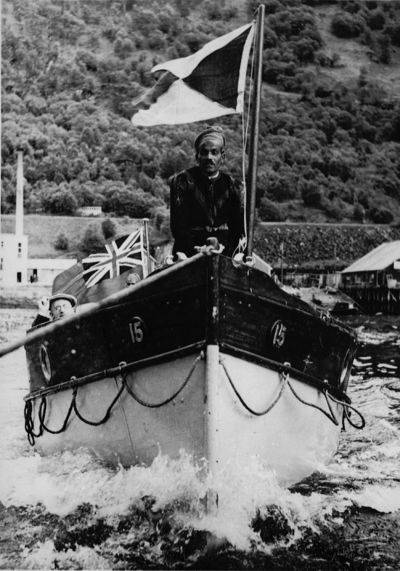
The ships motor launches whizzed you ashore....
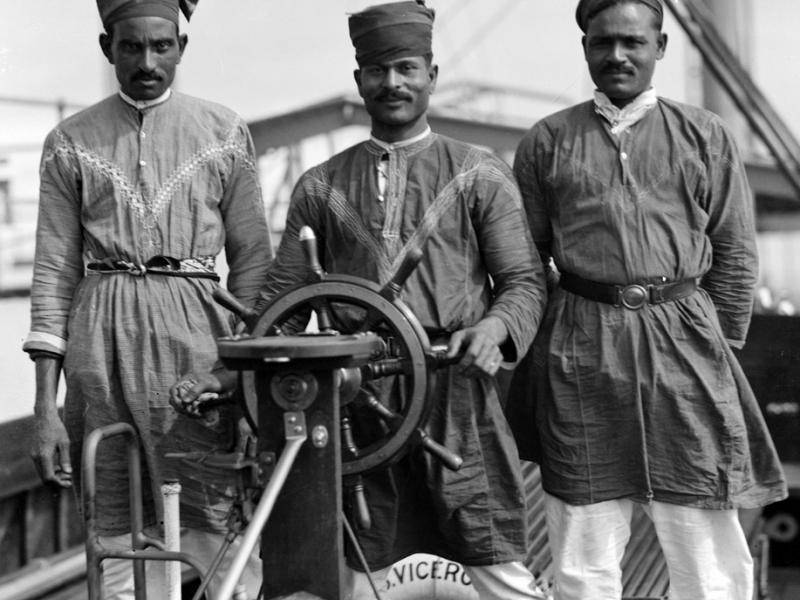
The ship's cheerful Lascar deck crew quickly endeared themselves to the Viceroy's passengers.
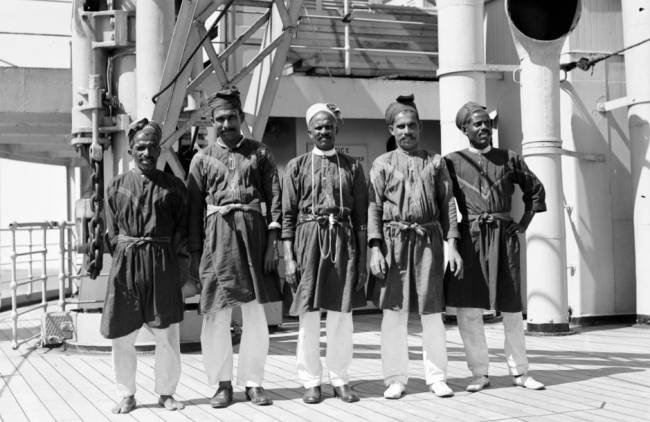
Viceroy's senior hands - the Serang, Tindals and Cassab (on left with bare feet)
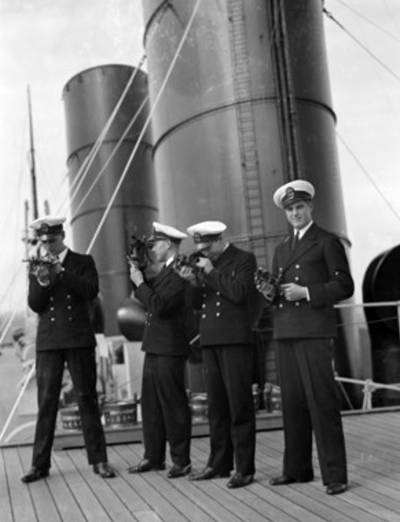
Cadets 'shooting the Sun' ~ the daily chore of obtaining a meridional altitude by sextant....
In 1939, shortly before the war, she toured the South Atlantic - the first ever cruise ship to call at Tristan da Cunha. She also visited the remote island of St Helena, where today, there are a collection of photographs held at the Museum of St Helena.
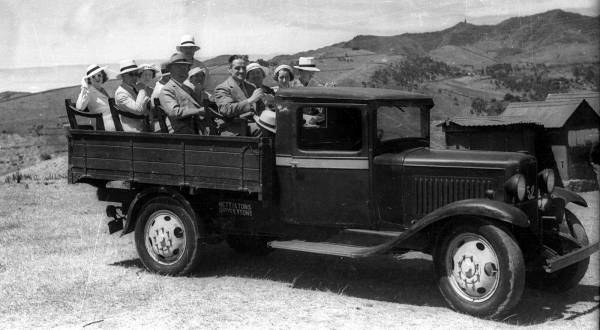
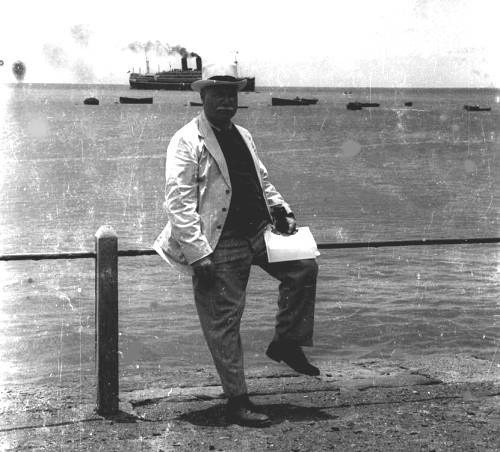
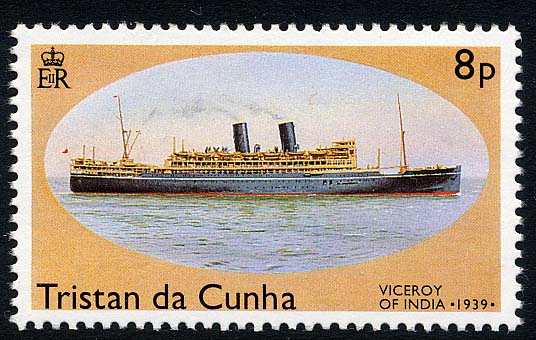
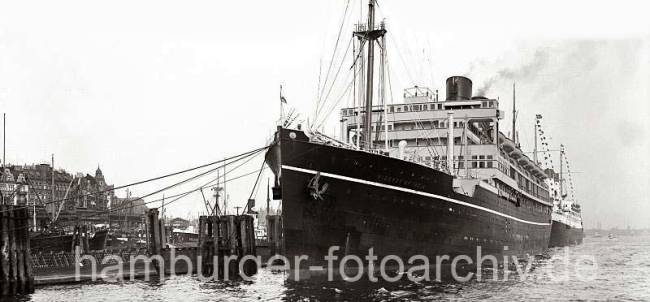
The ship regularly called at Hamburg and was popular with German passengers.....
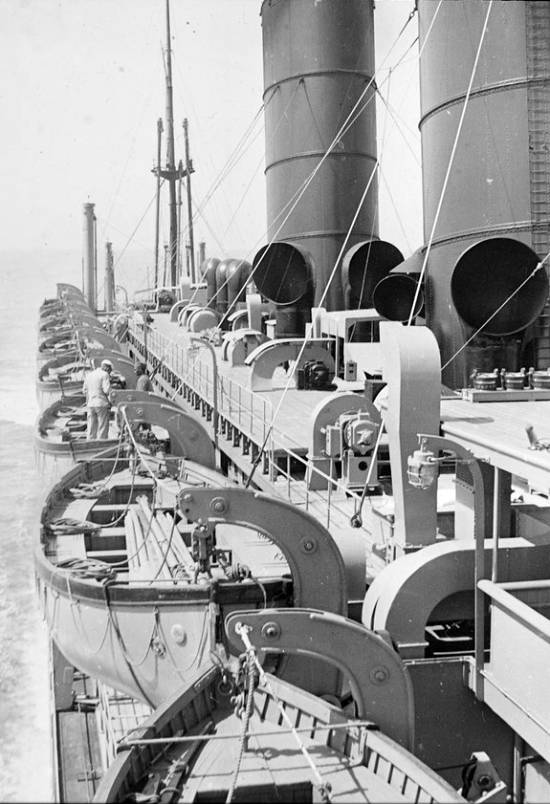
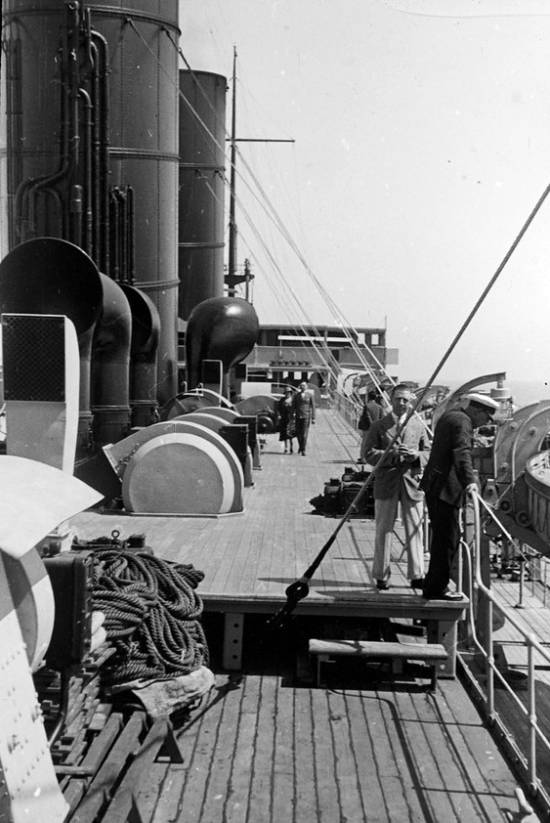
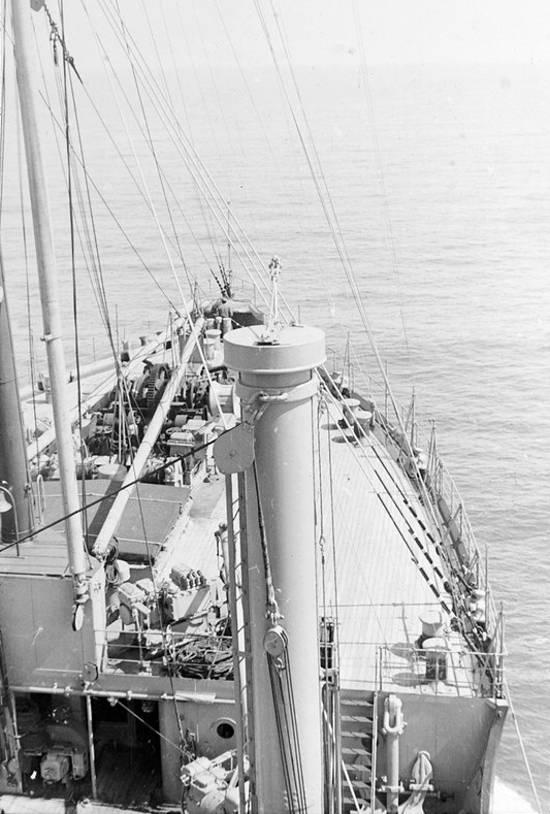
The Second World War
On 12th November 1940 the Ministry of War Transport requisitioned the Viceroy of India as a troop ship and she returned immediately to the River Clyde for conversion.
Cabins and ornate fittings, wood panelling and interior decor, were removed and pipe-framed bunks installed on the new troop decks.
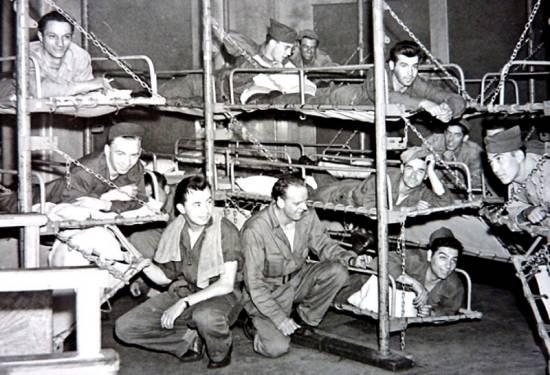
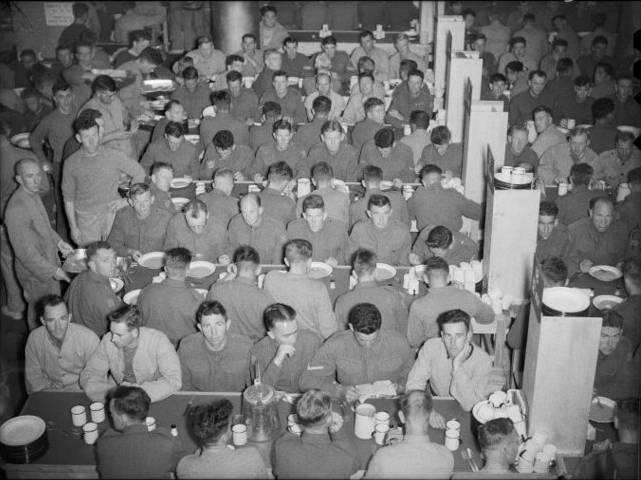
Elegant dining saloons were stripped of their furnishings and messing facilities for the troops installed.
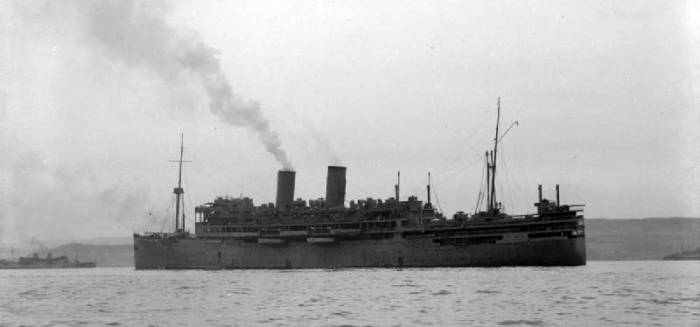
Departing the River Clyde, repainted a drab dark grey, with extra lifeboats and Carley floats.
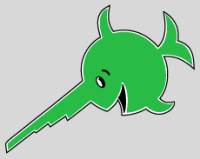
Laughing Sawfish emblem of the 9th U-boat Flotilla

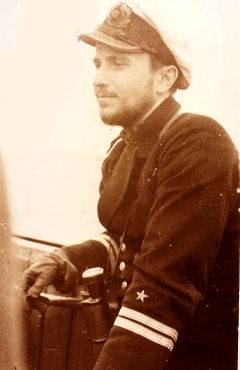
At 05.24 hours on 11 Nov 1942 the Viceroy of India had the misfortune to meet U-407, a Type VIIC U-boat of the Ninth Flotilla, commanded by twenty-four year old Kapitänleutnant Ernst-Ulrich Brüller (died 28th February 1997, aged 79). The ship had arrived at Algiers with convoy KMF-1A, disembarked her troops for Operation Torch, landing troops in Tunisia, Morocco and Algeria to drive out the Axis forces from North Africa. The region was dominated by the Vichy French, and officially Nazi-controlled, The Western Task Force encountered unexpected resistance, as well as bad weather, but Casablanca, the principal French Atlantic naval base, was captured after a short siege. The Center Task Force suffered some damage to its fleet, trying to land in shallow water, but the enemy ships were sunk or driven off, and Oran surrendered after heavy fire from British battleships. The Eastern Task Force met less opposition because the French Resistance had staged a coup in Algiers, and the Allies were able to push inland and compel surrender on the first day.
U-407 fired a spread of four torpedoes. Two hit the ship, killing four crew members.
At 0531 hrs U-407 fired a stern-tube torpedo, which missed.
The B-class destroyer HMS Boadicea took Viceroy of India in tow but she sank stern first. She then rescued all 432 surviving crew and 22 passengers, including the master, Captain Sydney Herbert French. and landed them safely at Gibraltar.
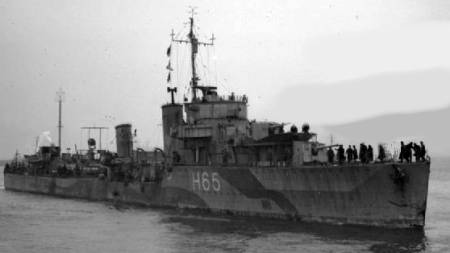
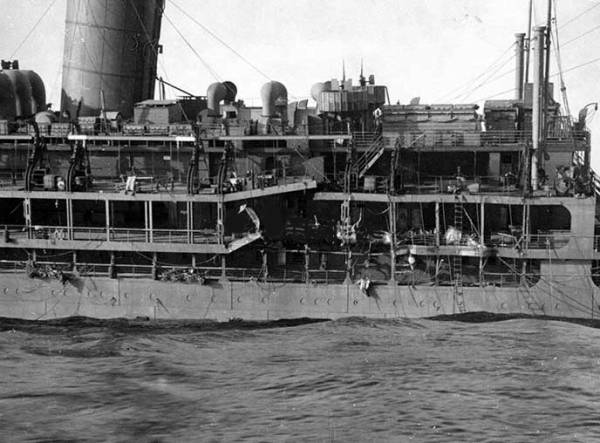

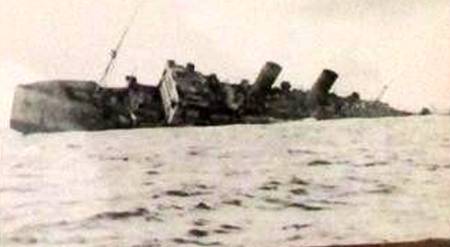
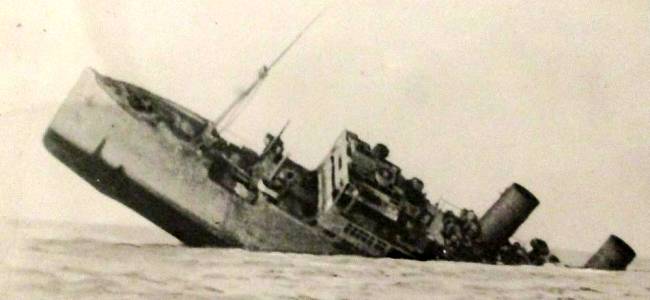

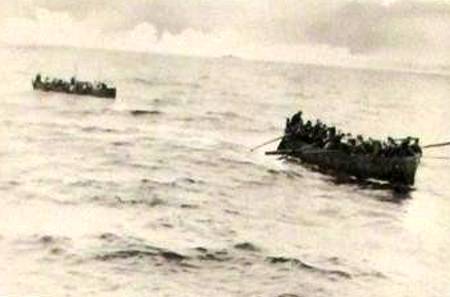
Viceroy of India was returning empty from Algiers, bound for Gibraltar, and was about 34 miles northwest of Oran when she was hit.........